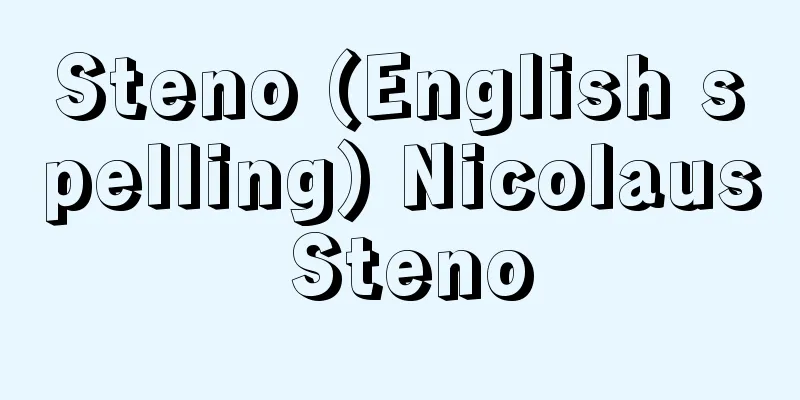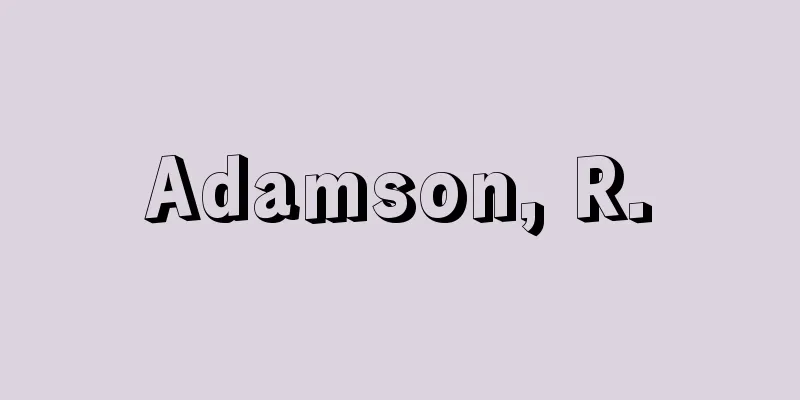Steno (English spelling) Nicolaus Steno

|
Danish anatomist, geologist, and theologian. Steno is his Latin name, and in Danish he is called Stensen. Born in Copenhagen, he studied medicine at the University of Copenhagen, traveled to Amsterdam in 1659, and then obtained his doctorate at Leiden University (1664). In 1662, as a result of his research in anatomy, he discovered and described the salivary duct (the steno duct). He was also well versed in the structure and function of the lacrimal gland, and studied muscles, being the first to confirm that the heart is made of muscles. In 1665, he went to Italy, became the personal physician of Ferdinand II in Florence, and converted to Catholicism in 1667. He also studied sharks there, and progressed from comparative research on shark teeth to research on geology, discovering the facts that form the basis of the law of superposition in geology in 1669, marking the beginning of modern geology. He returned to Germany in 1672 and became professor of anatomy at the University of Copenhagen, but for religious reasons he moved to Germany, where he was ordained a priest in 1675 and given the title of "Monk of Tityopolis" in 1677. He then lived in Germany as vicar for northern Germany and Scandinavia. [Otori Ranzaburo] [References] | |Source: Shogakukan Encyclopedia Nipponica About Encyclopedia Nipponica Information | Legend |
|
デンマークの解剖学者、地質学者、神学者。ステノはラテン語名であり、デンマーク語ではステンセンNiels Stensen。コペンハーゲンに生まれ、コペンハーゲン大学で医学を学び、1659年アムステルダムに遊学したのち、ライデン大学で学位を得た(1664)。1662年解剖学の研究の成果として唾液(だえき)管(ステノ管)を発見してこれを記載した。涙腺(るいせん)の構造・機能にも精通していたほか、筋肉についても研究し、心臓が筋肉よりなっていることを初めて確かめた。1665年イタリアに行き、フィレンツェでフェルディナント2世の侍医となり、1667年にカトリック教に改宗した。さらに同地でサメに関する研究を行い、サメの歯の比較研究から地質学の研究へと進み、1669年地質学における地層累重の法則の基礎となる事実を発見して近代地質学の端緒をつくった。1672年帰国してコペンハーゲン大学解剖学教授となったが、宗教的理由からドイツに移り、1675年司祭となり、1677年「ティティオポリスの僧」の称を与えられ、その後は北ドイツとスカンジナビアの司教代理としてドイツに住んだ。 [大鳥蘭三郎] [参照項目] | |出典 小学館 日本大百科全書(ニッポニカ)日本大百科全書(ニッポニカ)について 情報 | 凡例 |
<<: Stephen (Greek: Stephanos)
>>: Sudeten Mountains - Sudeten
Recommend
Green function
In a three-dimensional differential equation, when...
Cape Irago Lighthouse
A lighthouse located at Cape Irago at the tip of t...
Male screw
... In Japan, screws were first seen in 1543 (Ten...
Artifact-containing layer
An archaeological term referring to a soil layer c...
Kusanagi Sword - The Kusanagi
…But the Emperor again ordered him to pursue and ...
Samburu tribe - Samburu (English spelling)
They are one of the Nile-Hamitic peoples who live ...
Cubism - cubisme (English spelling) French
Cubism. The most influential innovative movement ...
smṛti (English spelling) smrti
...Reflecting the supremacy of the Brahmins since...
Kabira Shell Mound
<br /> A shell mound in Kabira, Ishigaki Cit...
Right to dismiss - Kaikoken
...The purpose of workers forming unions and nego...
Standard sieve (standard sieve)
Among sieves made of metal mesh or metal perforate...
domestic subjects
...One tradition of home economics, which focuses...
Polyterpene
…Terpenes with n 3 or more are also known in natu...
Kagami Crystal
…He presented tableware and craft works using eng...
Selenicereus pteranthus (English spelling)
...Mexican Cephalocereus senilis (Haw.) Pfeiff. (...

![Elbe [river] - Elbe](/upload/images/67cb0bf2711bd.webp)







